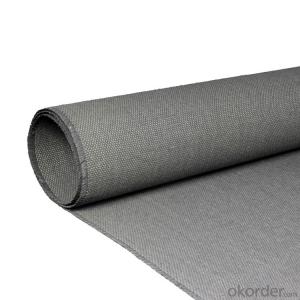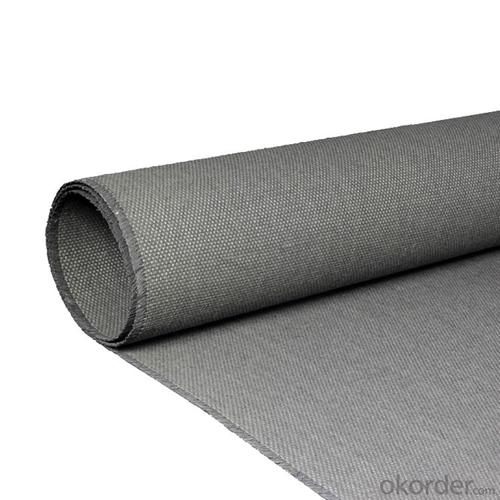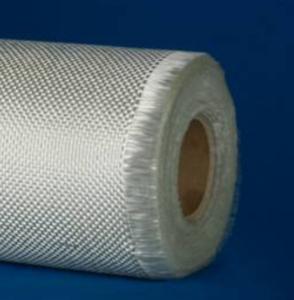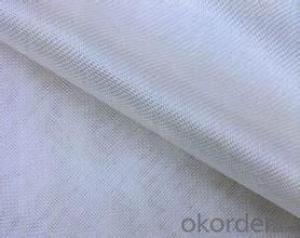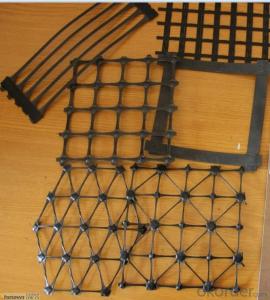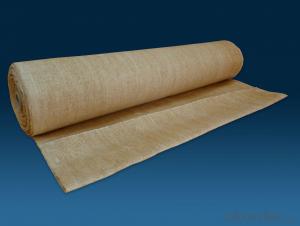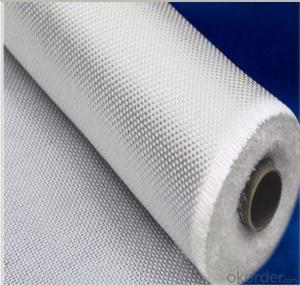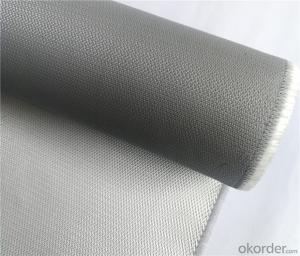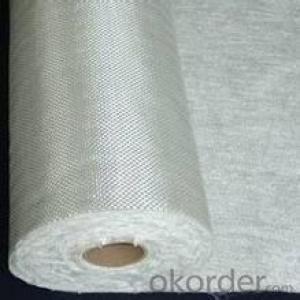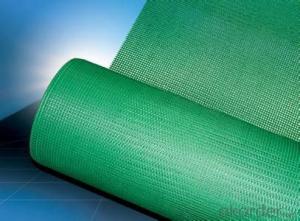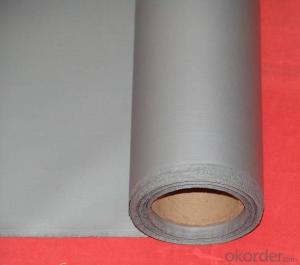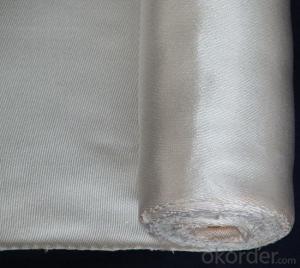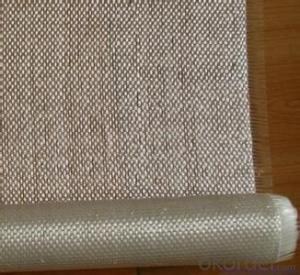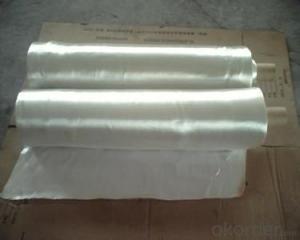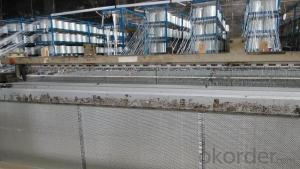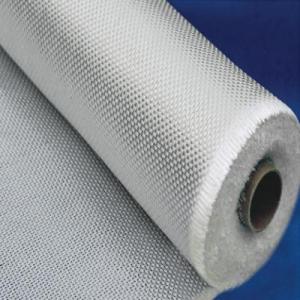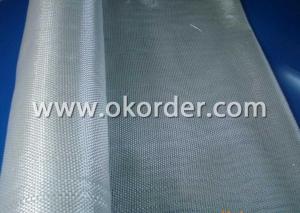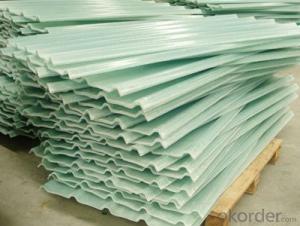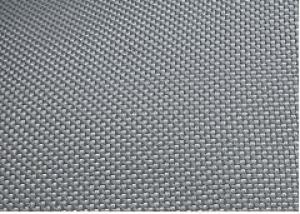3D Fireproof Fiberglass Fabrics Coated with Calcium Silicate
- Loading Port:
- Ningbo
- Payment Terms:
- TT OR LC
- Min Order Qty:
- 500 m²
- Supply Capability:
- 300000 m²/month
OKorder Service Pledge
OKorder Financial Service
You Might Also Like
Description: The heavyweight woven fiberglass fabric treated with special calcium silicate solution which provides a high-temperature resistance as well as greater abrasion. The continuous temperature up to 700℃, Short burst up to 750℃
Features: high temperature resistance,heat resistance
Application: Removable insulation mattress, jacket & pad, Fire doors/smoke curtain, Dust filter bag, Flexible expansion joints & compensators
PRICE: USD5 per square meter
UNIT: square meter
MOQ: 500square meters
Weight: 1100gsm
Width: 1m 1.5m 1.8m or customized
Yarn Type: E-glass
Standing temperature: up to 700℃
Product name: Calcium Silicate Coated Fiberglass Fabric
Coating/Finish/Surface Treatment: Calcium Silicate coated
Roll length: 50 meter or customized
Color: grey or customized
Weave Type:plain woven
Alkali content: Alkali free
Processing service: cutting
Material: fiberglass
Thickness: 1.4mm
Size: can be customized
Supply ability: 300000 meters per month
Packaging: Rolls packed In cartons loaded on pallets or according to customers' requirements.
Lead time: 7-30 days
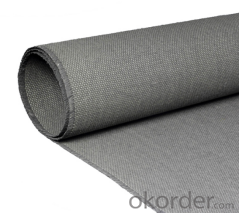
- Q: The main characteristics of aluminum foil composite glass fiber cloth
- Direct hot pressing compound avoids compounding adhesive and saves composite cost of overlaying.
- Q: How is fiberglass fabric used in the manufacturing of sports equipment?
- Due to its unique properties and advantages, fiberglass fabric is widely utilized in the production of sports equipment. One of its primary uses in this industry is for reinforcement purposes. By layering and combining the fabric with resin, a lightweight yet sturdy composite material is created. In the manufacturing of sports equipment like tennis rackets, golf clubs, and hockey sticks, fiberglass fabric is employed to enhance strength and stiffness. This involves layering and bonding the fabric with other materials, such as carbon fiber, to form a composite structure with excellent flexural strength and impact resistance. As a result, athletes can achieve greater power and control during their performance. Furthermore, fiberglass fabric is also incorporated into the production of protective gear for various sports. Helmets, shin guards, and body armor often feature this fabric due to its ability to absorb and distribute impact energy. With its high tensile strength and tear resistance, fiberglass fabric ensures the safety of athletes during high-contact sports. Moreover, fiberglass fabric is utilized in the manufacturing of sports equipment that requires waterproof or weather-resistant properties. For instance, sailboards, canoes, and kayaks incorporate the fabric to provide a protective layer against water penetration. This enhances the equipment's durability and longevity, enabling athletes to use them in different weather conditions without compromising performance. In conclusion, fiberglass fabric plays a vital role in the production of sports equipment by providing reinforcement, enhancing strength and durability, ensuring athlete safety, and enabling weather resistance. Its versatile properties make it an essential component in a wide range of sports gear, contributing to better performance, protection, and overall enjoyment for athletes worldwide.
- Q: How does fiberglass fabric handle moisture?
- Fiberglass fabric is highly resistant to moisture. It doesn't absorb water and is not prone to mold or mildew growth. It maintains its strength and durability even when exposed to high levels of humidity or wet conditions.
- Q: What is the melting point of fiberglass fabric?
- The melting point of fiberglass fabric fluctuates based on the fabric's specific type and composition. Typically, fiberglass fabric possesses a melting point that spans from 1000 to 1400 degrees Celsius (or 1832 to 2552 degrees Fahrenheit). Nevertheless, it is crucial to acknowledge that fiberglass fabric typically begins to deteriorate and compromise its structural stability at temperatures considerably lower than its melting point. Consequently, it is advised to refrain from subjecting fiberglass fabric to elevated temperatures in order to avert any possible harm or safety risks.
- Q: Can fiberglass fabric be used for making luggage?
- Yes, fiberglass fabric can be used for making luggage. Fiberglass fabric is known for its durability and strength, making it an ideal material for luggage that needs to withstand rough handling and frequent use. It is lightweight yet sturdy, which allows for easy maneuverability of the luggage while still providing protection for its contents. Additionally, fiberglass fabric is resistant to water and stains, making it a practical choice for luggage that may be exposed to various weather conditions. Overall, fiberglass fabric offers a reliable and long-lasting option for manufacturing luggage.
- Q: What are the different lamination options available for fiberglass fabric?
- The different lamination options available for fiberglass fabric include resin impregnation, film lamination, and adhesive lamination.
- Q: What are the different fiberglass fabric finishes for chemical resistance?
- Various fiberglass fabric finishes are available to provide chemical resistance. These finishes are specifically designed to safeguard the fiberglass fabric against the detrimental effects of different chemicals, rendering it suitable for use in industries where exposure to corrosive substances is prevalent. Some of the options for chemical-resistant fiberglass fabric finishes are as follows: 1. Vinyl Finish: By applying a coating of vinyl resin to the fiberglass fabric, this finish ensures exceptional chemical resistance. Vinyl is renowned for its ability to withstand a wide range of chemicals, including acids, alkalis, oils, and solvents. The vinyl finish acts as a protective barrier between the fabric and the chemicals, preventing any damage or degradation. 2. Fluoropolymer Finish: Fluoropolymer finishes, such as PTFE (polytetrafluoroethylene) or FEP (fluorinated ethylene propylene), exhibit outstanding chemical resistance. These finishes create a non-stick surface that repels most chemicals, making them highly suitable for applications where the fabric may come into contact with aggressive substances. 3. Neoprene Finish: Neoprene, a synthetic rubber, is well-known for its excellent resistance to oils, acids, alkalis, and solvents. Fiberglass fabric with a neoprene finish can endure exposure to a wide array of chemicals without deteriorating or compromising its structural integrity. 4. Polyurethane Finish: Offering good chemical resistance, polyurethane finishes provide additional advantages such as enhanced abrasion resistance and flexibility. This finish is commonly utilized in applications where the fabric must endure exposure to chemicals as well as physical wear and tear. 5. Silicone Finish: Silicone finishes exhibit remarkable resistance to high temperatures and a diverse range of chemicals. They establish a protective layer on the fiberglass fabric, guarding it against chemical attack and degradation. Consequently, silicone finishes are ideal for usage in environments involving aggressive substances or extreme conditions. It is worth noting that the selection of a fiberglass fabric finish for chemical resistance depends on the specific chemicals to which it will be exposed and the operating conditions of the particular application. Seeking guidance from a knowledgeable supplier or manufacturer can assist in determining the most suitable finish for a specific chemical-resistant fiberglass fabric.
- Q: Can fiberglass fabric be used for making window screens?
- Yes, fiberglass fabric can be used for making window screens. Fiberglass is a lightweight and durable material that is resistant to tears, corrosion, and UV rays, making it an ideal choice for window screens. It is also highly flexible, allowing for easy installation and removal. Additionally, fiberglass fabric has a fine mesh structure that effectively keeps out insects while still allowing for airflow and visibility. Overall, fiberglass fabric is a popular and reliable option for making window screens.
- Q: Can fiberglass fabric be used for reinforcement in automotive parts?
- Indeed, automotive parts can be reinforced with fiberglass fabric. Renowned for its exceptional strength-to-weight ratio, fiberglass fabric proves to be an optimal material for reinforcing diverse components within automobiles. Its utilization is prevalent in the production of body panels, hoods, fenders, and other integral structural parts of vehicles. By endowing remarkable rigidity and stiffness, fiberglass fabric significantly enhances the overall strength and longevity of automotive parts. Furthermore, its resistance to corrosion, coupled with its ability to endure high temperatures, renders fiberglass fabric highly suitable for deployment within the automotive industry.
- Q: Can fiberglass fabrics be used for insulation purposes?
- For insulation purposes, fiberglass fabrics are a suitable option. These fabrics consist of extremely fine glass fibers that are woven together, resulting in a material that is lightweight and flexible. The excellent insulation properties of this fabric are due to its ability to trap air and prevent the transfer of heat or cold. Commonly used in insulation applications, fiberglass fabrics are employed for insulating pipes, ducts, walls, and roofs. They are also utilized in the production of thermal blankets and curtains designed for insulation purposes. Moreover, fiberglass fabrics can be combined with other insulating materials to enhance their overall effectiveness. One of the main advantages of using fiberglass fabrics for insulation is their high thermal resistance. With a low thermal conductivity, these fabrics can significantly reduce heat transfer and maintain stable temperatures in insulated areas. Additionally, fiberglass fabrics are non-combustible and exhibit good resistance to moisture and chemicals, making them suitable for a wide range of insulation applications. Furthermore, fiberglass fabrics are easy to handle and install. They can be easily cut and shaped to fit specific dimensions, and can be attached to surfaces using mechanical fasteners or adhesive. Due to their flexibility and ease of installation, fiberglass fabrics are a popular choice for insulation projects in both residential and commercial settings. To conclude, fiberglass fabrics are an excellent option for insulation purposes. Their high thermal resistance, durability, and ease of installation make them a versatile and effective solution for various insulation applications.
Send your message to us
3D Fireproof Fiberglass Fabrics Coated with Calcium Silicate
- Loading Port:
- Ningbo
- Payment Terms:
- TT OR LC
- Min Order Qty:
- 500 m²
- Supply Capability:
- 300000 m²/month
OKorder Service Pledge
OKorder Financial Service
Similar products
Hot products
Hot Searches
Related keywords
